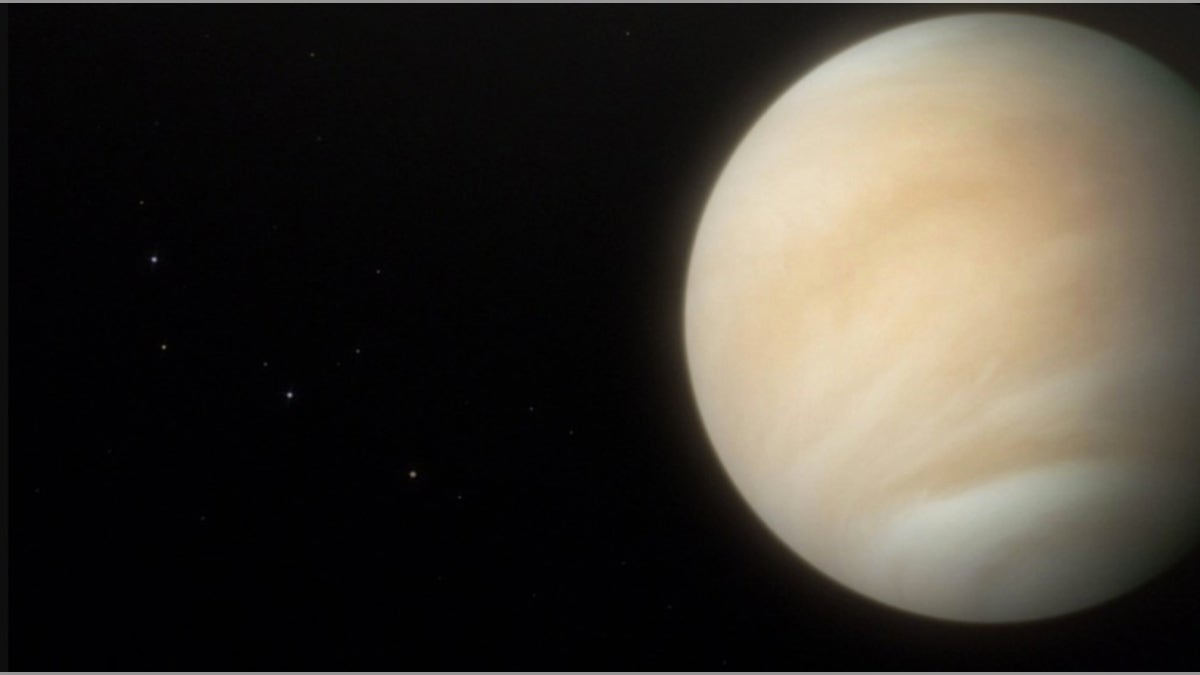Fox News Flash top headlines for July 21
Fox News Flash top headlines are here. Check out what's clicking on Foxnews.com.
Venus likely has at least three dozen active volcanoes on its surface, according to a new study.
The research, published in Nature Geoscience, found evidence of 37 active volcanoes on the planet by looking at models of thermo-mechanic activity below the surface, as well as 3-D simulations of coronae formation.
“This is the first time we are able to point to specific structures and say ‘Look, this is not an ancient volcano but one that is active today, dormant perhaps, but not dead,’” said study co-author and University of Maryland geology professor Laurent Montési in a statement. “This study significantly changes the view of Venus from a mostly inactive planet to one whose interior is still churning and can feed many active volcanoes.”

The 3D rendition above shows two coronae observed on the surface of Venus. The ring-like structures are formed when hot material from deep inside the planet rises through the mantle and erupts through the crust. (Credit: Laurent Montési)
VENUS WAS LIKELY HABITABLE FOR 3B YEARS. THEN SOMETHING MYSTERIOUS HAPPENED.
It had long been assumed that Venus was geologically active far longer than Mercury or Mars, according to Space.com, but recent evidence has pointed out that the activity has lasted far longer than anyone thought.
The addition of the 3-D simulations added to the realism, which allowed researchers to see the planet's surface in greater detail, the researchers explained.
"The improved degree of realism in these models over previous studies makes it possible to identify several stages in corona evolution and define diagnostic geological features present only at currently active coronae," Montési added. “We are able to tell that at least 37 coronae have been very recently active.”
The active volcanoes are "clustered in a handful of locations," which may suggest where the planet is active.

Venus has been called Earth's "evil twin." (NASA's Goddard Space Flight Center)
It may also give researchers places to examine, if future missions to Venus take place, including Europe’s EnVision, scheduled to launch in 2032.
WE COULD GO TO VENUS WITH TODAY'S TECHNOLOGY, SCIENTISTS SAY
Venus, which has been called "Earth's evil twin," has an extremely harsh climate, with a surface temperature of 864 degrees Fahrenheit. It's likely too hot to support life, but NASA has recently said that it intends to explore the planet.
In late 2019, NASA said it was working on a stingray-like spacecraft to explore the planet, which has more volcanoes than any other celestial body in the Solar System.
A study published in September 2019 suggested that Venus may have been habitable for a few billion years — until something mysterious happened.

